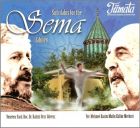Buy or gift a stand-alone digital subscription and get unlimited access to dozens of back issues for just £18.99 / $18.99 a year.
Please register at www.exacteditions.com/digital/cornucopia with your subscriber account number or contact subscriptions@cornucopia.net
Buy a digital subscription Go to the Digital EditionCharles Perry, Arabist and food historian, continues his travels along the highways and byways of Turkey’s culinary past. In Konya he is invited to a traditional wedding feast – rice with everything
The final festivity in a traditional Konya wedding is a feast called “wedding rice” (düğün pilavı) to which anyone may come. That means literally anyone; no invitation is needed and no one is excluded. The food is cooked by specialist caterers who serve up to 10,000 guests at a time. Locals jest that on Sunday – these banquets are always held on a Sunday – the poor people of Konya stick spoons in their belts and wander around looking for a wedding rice. Naturally, the Konyalıs also tell a humorous story about a banquet-seeker who follows a crowd out to some remote neighbourhood, only to find they were headed to a funeral.
There’s a similar custom in Central Asia. In fact, the very symbol of Uzbekistan, reproduced on murals, postcards and gift-shop souvenirs throughout the country, is a crew of men in kaftans blowing on immensely long horns. On the day of a wedding, they march through the streets, trumpeting away to announce the feast. As in Konya, the more, the merrier; the ideal is to invite yetti mahalla, or “seven neighbourhoods”. The Uzbek wedding feast is also prepared by specialists, who cook mountains of pilav in hemispherical cauldrons four feet across.
Konya’s wedding caterers are big business. An advertisement for one of them covers a large building beside the Konya-Istanbul highway halfway between the airport and downtown. It’s not cheap to feed thousands of guests, but the tradition has one advantage. Families can never fall out over the menu, because it’s an absolutely stereotyped sequence of six dishes.
When I was in Konya recently, the food writer Nevin Halıcı found me a wedding rice by calling up one of the city’s leading caterers (who personally knew of twenty-five such feasts being held that day). It was to be in the cool, pleasant suburb of Meram, and the family was expecting a modest number of guests, something between 1,300 and 2,000. As it happened, the mother of the groom was a childhood friend of Nevin’s, so we were also able to attend the groom’s family’s party – a very much smaller, invitation-only event the night before the wedding rice.
The same caterer cooked both meals. These men do everything, even providing a water tank with multiple taps for the guests to wash their hands. He created his cooking stations by building a low wall of cinderblock about thirty feet long, with more bricks set at right angles to it at intervals of four or five feet. Seven huge copper kazans were placed at the junctures, and wood fires were built under them.
When we arrived for the groom’s party, chickpeas were boiling in one of the kazans, stock was being made from bones in another and soups were under way in two more. A man was hard at work toasting semolina for irmik helvası in the fifth kazan, stirring and shovelling it continually with a long wooden paddle. The milk that would eventually go into it was boiling nearby, alongside a kazan of water being boiled for sundry purposes. Masses of chopped meat had already been fried for adding to soups and pilavs the following day. Needless to say, cooking would continue all night.
The main course for the family dinner was tirit, chunks of braised lamb served on bread with onions. Showing he was no blind traditionalist, the caterer had topped it with chopped tomatoes and kıl biber (the local mild green pepper, so long and thin it looks like a string bean) instead of the usual yoghurt. As a Californian, I felt quite at home with this innovation – it made it a sort of California Cuisine tirit. In fact, the bride and groom, though both from Konya, had met while attending college in California.
The next day we returned for the wedding rice, and this time it was much easier to find the house, from all the cars parked up and down the street and walkers straggling in from several directions – men in business suits, teenagers in T-shirts, village women in flowered pantaloons. “This is tradition,” said Nevin as we walked among the tables set on the spacious lawn. “Some people sit the women at this table, the men at that table. But we will sit with the modern people.”
At any Konya feast, one sweet dish follows every two savoury dishes. So after our yogurt soup (topped with a bit of fat from the other soup – not strictly traditional, said Nevin) and a pilav mixed with chickpeas and topped with chunks of lamb, we had irmik helvası. Then came a tangy okra soup and some pilav topped with fried meat. As friends of the family, we were treated to an extra portion of meat concealed under the rice (this is quaintly called denizaltı, “under the sea”). At the end came the soupy rice pudding zerde, which in Konya is not necessarily coloured yellow with saffron.
True to the event’s name, every dish contained at least some rice. And true to tradition, everybody got “forty mouthfuls”. At least.
Charles Perry is the author of A Baghdad Cookery Book, a new translation of AI-Baghdadi’s Kitab al-Tabikh
Konya is the home of the Mevlevi dervish order, to which Nevin Halıcı’s family belongs. In his poems, the founder of the order mentioned a surprising number of foods for a mystic, and it is quite easy to put together a dinner of Mevlana’s dishes. Nevin served me such a dinner when I was in Konya. It included lettuce salad, noodle soup (tutmaç çorbası), su böreği, dried fruit compote (hoşaf} and an almond sweetmeat. And pilav, of course, which in Konya has the jocular nickname kara haber (the black news), because it indicates the meal is coming to an end. She has made a great study of this food tradition, and recently she published a book about the cuisine of the Mevlevis, to whom food was not just food but a metaphor and a theatre for spiritual training.
Sufi Cuisine, by Nevin Halıcı, published by Saqi Books, London, is sadly out of print
Correct trimming of the stem is the vital first step. Instead of chopping off the hard stem caps, one should trim it into a cone shape, so that the pod then looks like a sharpened pencil and the juices remain trapped inside.
More cookery features
For boldness, colour and virtuosity nothing can compare with the golden age of the Ottoman kaftan. After months of conservation work to ensure that they could travel safely, the Topkapı lent the Sackler dozens of its mesmerising royal kaftans.
At last there need be nothing between you and the Bosphorus. Patricia Daunt tells the story of how two architects created Sumahan on the Water, breathing new life into an old Ottoman spirit factory. Photographs by Jürgen Frank
A 40-page celebration of the architectural heritage of the Eastern Black Sea Mountains
The dashing Abdülmecit Efendi was the last member of the Ottoman dynasty to hold court on the Bosphorus. This enlightened, sophisticated man with a passion for painting, son of a Sultan and cousin of the last Sultan, spent two brief years as Caliph. But in 1924, the caliphate was abolished and Abdülmecid left the city his family had captured five hundred years earlier for exile in France. His paintings, abandoned in the very studio of his house on Çamlıca Hill where he had created them, are a remarkable pictorial legacy of the last days of empire. By Philip Mansel. Photographs by Fritz von der Schulenburg
Maureen Freely looks back on the life of the architectural historian Godfrey Goodwin, who died aged 84.

TÜMATA The Traditional Turkish Music Research and Promotion Society, Dr Rahmi Oruc Güvenc

TÜMATA The Traditional Turkish Music Research and Promotion Society, Dr Rahmi Oruc Güvenc

Cornucopia works in partnership with the digital publishing platform Exact Editions to offer individual and institutional subscribers unlimited access to a searchable archive of fascinating back issues and every newly published issue. The digital edition of Cornucopia is available cross-platform on web, iOS and Android and offers a comprehensive search function, allowing the title’s cultural content to be delved into at the touch of a button.
Digital Subscription: £18.99 / $18.99 (1 year)
Subscribe now